Top speed 222 km/h Weight 718 kg Wingspan 10 m Engine type Allison Model 250 | Range 702 km Length 12 m Unit cost 900,000–1,200,000 USD | |
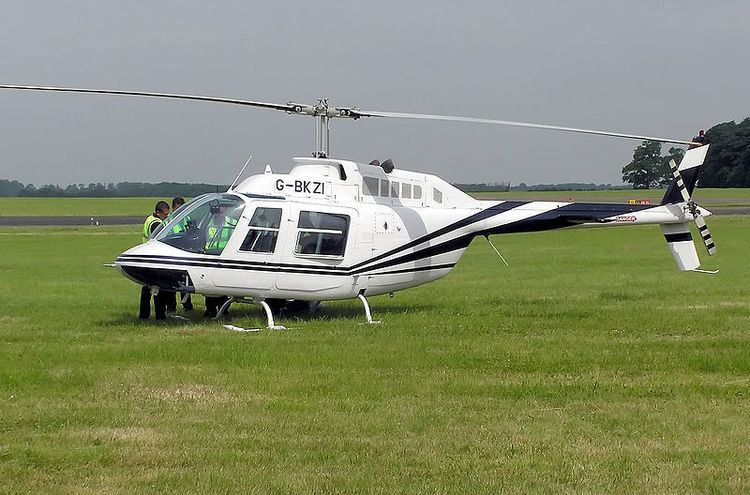 | ||
Bell 206l 4 longranger landing full stop
The Bell 206 is a family of two-bladed, single- or twin-engined helicopters, manufactured by Bell Helicopter at its Mirabel, Quebec plant. Originally developed as the Bell YOH-4 for the United States Army's Light Observation Helicopter program, it was not selected by the Army. Bell redesigned the airframe and successfully marketed the aircraft commercially as the five-place Bell 206A JetRanger. The new design was eventually selected by the Army as the OH-58 Kiowa. Bell also developed a seven-place LongRanger, which was later offered with a twin-engined option as the TwinRanger, while Tridair Helicopters offers a similar conversion of the LongRanger called the Gemini ST. The ICAO-assigned model designation "B06" is used on flight plans for the JetRanger and LongRanger, and the designation "B06T" is used for the twin-engined TwinRangers.
Contents
- Bell 206l 4 longranger landing full stop
- Bell 206l 4 longranger full start takeoff
- Origins and JetRanger
- LongRanger
- Gemini ST and TwinRanger
- Operational history
- Civilian
- Military
- Operators
- Military and government
- Former operators
- Specifications 206B L4
- References
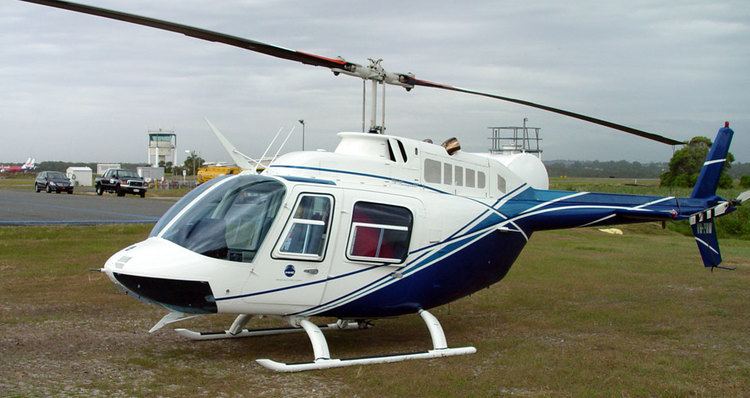
Bell 206l 4 longranger full start takeoff
Origins and JetRanger
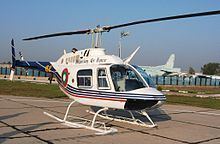
On October 14, 1960, the United States Navy solicited response from 25 aircraft manufacturers to a request for proposals (RFP) on behalf of the Army for the Light Observation Helicopter (LOH). Bell entered the competition along with 12 other manufacturers, including Hiller Aircraft and Hughes Tool Co., Aircraft Division. Bell submitted the D-250 design, which would be designated as the YHO-4. On May 19, 1961, Bell and Hiller were announced as winners of the design competition.
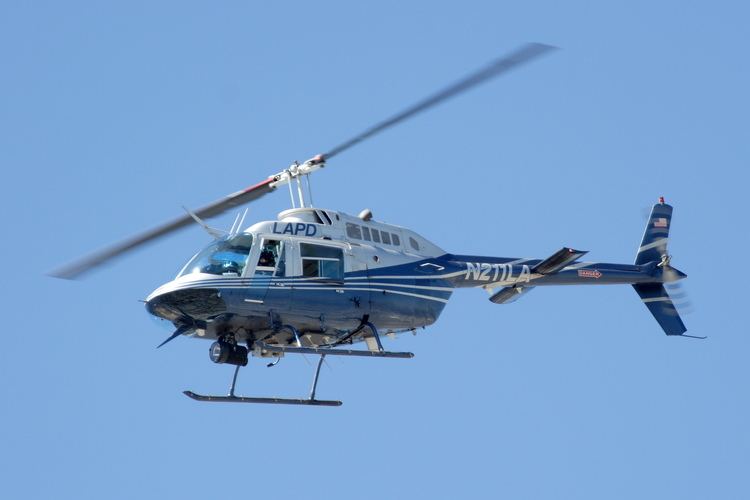
Bell developed the D-250 design into the Bell 206 aircraft, redesignated as YOH-4A in 1962, and produced five prototype aircraft for the Army's test and evaluation phase. The first prototype flew on December 8, 1962. The YOH-4A also became known as the Ugly Duckling in comparison to the other contending aircraft. Following a flyoff of the Bell, Hughes and Fairchild-Hiller prototypes, the Hughes OH-6 was selected in May 1965.
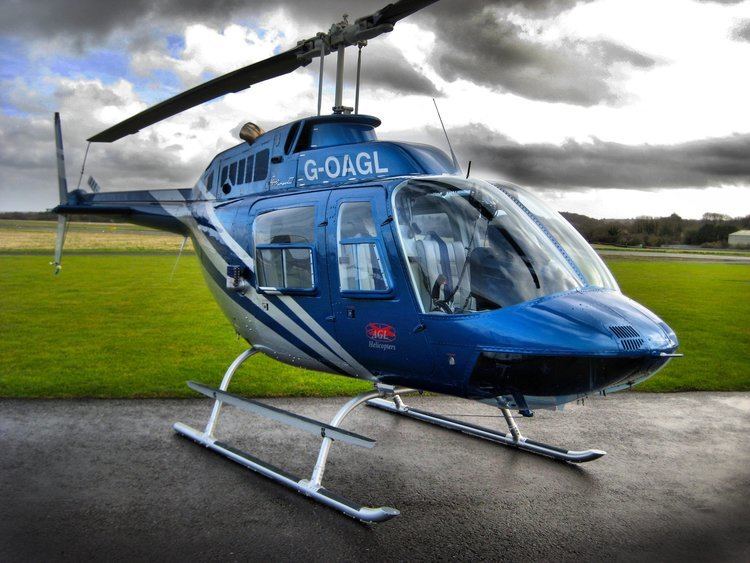
When the YOH-4A was eliminated by the Army, Bell went about solving the problem of marketing the aircraft. In addition to the image problem, the helicopter lacked cargo space and only provided cramped quarters for the planned three passengers. The solution was a redesigned fuselage, sleeker and aesthetically appealing, adding 16 ft3 (0.45 m3) of cargo space in the process. A Bell executive contributed to this redesign by drawing on a sketch two lines extending the fuselage to where it meets the tail. The redesign was designated Bell 206A, and Bell President Edwin J. Ducayet named it the JetRanger, denoting an evolution from the popular Model 47J Ranger.
LongRanger
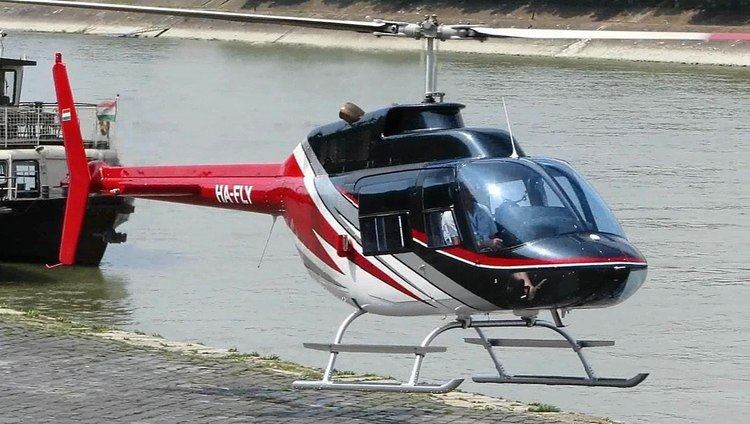
The 206L LongRanger is a stretched variant with seating for seven. The fuselage, stretched a total of 30 inches (760 mm), adds two rear-facing seats between the front and rear seats. Since 1975, Bell has produced more than 1,700 LongRangers across all variant types. In 1981, a military version was released, the 206L TexasRanger. The original 206L used an Allison 250-C20B engine, and a series of model upgrades replaced this engine with more powerful versions; the 206L-1 used a 250-C28, and the 206L-3 and 206L-4 used the 250-C30P. In both applications, the 250-C30P is derated from 650 hp for takeoff and 501 hp continuous. The 206L-3 is transmission–limited to 435 hp for take-off, and the 206L-4 is transmission-limited to 495 hp. The derating of the C30P produces an advantage in hot-day and high-altitude operations as it can produce the rated horsepower at higher altitudes and temperatures where applications that use the maximum rating of the engine at sea level suffer accelerated performance deterioration with increases in temperature and altitude. The 206L-3 and L-4 have not been offered in a twin configuration under those model designations.
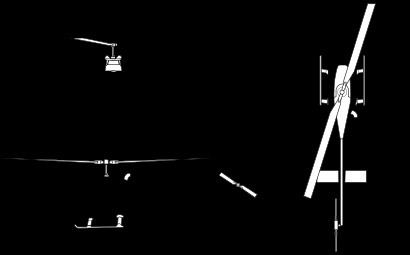
In 2007, Bell announced an upgrade program for the 206L-1 and 206L-3 which is designed to modify the aircraft to the 206L-4 configuration; modified aircraft are designated 206L-1+ and 206L-3+. Modifications include strengthened airframe structural components (including a new tailboom), improved transmission, upgraded engine for the L-1, all of which result in a maximum gross weight increase of 300 pounds and increased performance.
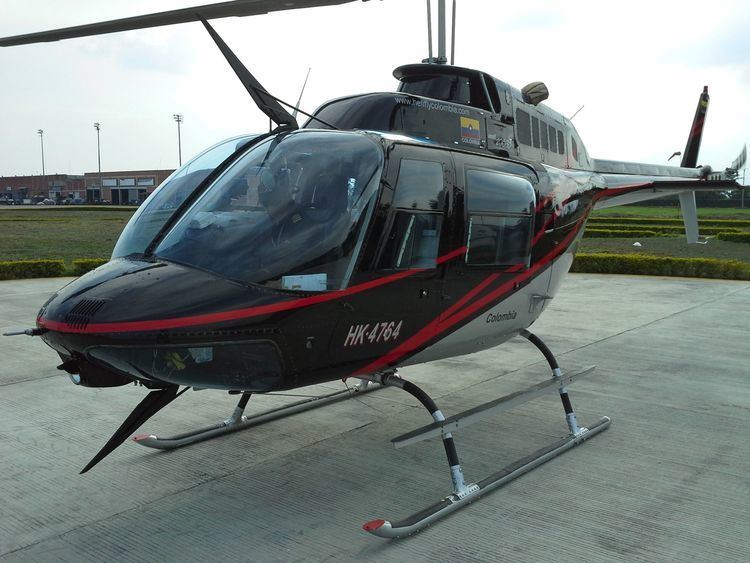
On January 24, 2008, Bell Helicopter announced plans to end production of the Bell 206B-3 version after current order commitments were fulfilled in 2010. In 2011, used 206B-3s sold for around $1.4 million depending upon the equipment and configuration. However, production of the 206L-4 is ongoing as of 2016.
Gemini ST and TwinRanger
The TwinRanger name dates from the mid-1980s when Bell developed the Bell 400 TwinRanger, but it never entered production.
In 1989, Tridair Helicopters began developing a twin–engine conversion of the LongRanger, the Gemini ST. The prototype's first flight was on January 16, 1991, while full FAA certification was awarded in November. Certification covers the conversion of LongRanger 206L-1s, L-3s and L-4s to Gemini ST configuration. In mid-1994 the Gemini ST was certificated as the first Single/Twin aircraft, allowing it to operate either as a single or twin engine aircraft throughout all phases of flight.
The Bell 206LT TwinRanger was a new-build production model equivalent to Tridair's Gemini ST, and was based on the 206L-4. Thirteen 206LTs were built, the first being delivered in January 1994, and the last in 1997. The TwinRanger was replaced in Bell's lineup by the mostly-new Bell 427, whereas Bell intends for the Bell 505 Jet Ranger X to replace the 206 single-engine versions from around 2015 and compete with the Robinson R66.
Operational history
The first Bell 206A flew on January 10, 1966, and the aircraft was revealed later that month at the Helicopter Association of America (HAA) convention. On October 20, 1966, the JetRanger received FAA certification. Delivery of the JetRanger to customers began on January 13, 1967, with the first aircraft being purchased by Harry Holly, CEO of the Hollymatic Corporation and previous owner of a Bell Ranger. In 1968, the United States Navy selected the 206A as its primary trainer, the TH-57 Sea Ranger. The Army also eventually selected the 206A for a light observation helicopter as the OH-58 Kiowa.
The basic shape and design of the JetRanger remained unchanged since 1967, but Bell introduced the 206B JetRanger II in 1971. In 1977, the 206B-3 JetRanger III was introduced with its modified tail rotor and more powerful engine. The JetRanger is popular with news media for traffic and news reporting. The LongRanger is commonly used as an air ambulance and as a corporate transport. On September 1, 1982, pilots H. Ross Perot, Jr. and Jay Coburn departed Dallas, Texas in the "Spirit of Texas", a Bell 206L-2 (N3911Z). They returned on 30 September, 29 days and 3 hours later, completing the first around–the–world helicopter flight, making them Earthrounders. In 1983, Australian Businessman Dick Smith became the first helicopter pilot to complete a solo trip around the world in 260 flight hours. During the trip, he landed his 206B-3 (S/N 3653; VH-DIK) on prepositioned container ships to refuel between Japan and the Aleutian Islands.
In 1993, the U.S. Army chose the Bell 206B-3 as the winner of the New Training Helicopter competition, to serve as its primary training helicopter, the TH-67 Creek. The number of TH-67s being divested by the Army is too small to impact civilian markets.
On July 22, 1994, Ron Bower landed his 206B-3 (N206AJ) at Hurst, Texas, setting a new record for around-the-world flight by a helicopter. Bower had departed on June 24 and returned 24 days, 4 hours, 36 minutes and 24 seconds later, averaging 35.62 knots (40.99 mph, 65.97 km/h). Bower had added a 91-gallon auxiliary fuel tank, which doubled the JetRanger III's range.
In September 1995 in southwestern Washington State, a low–flying LongRanger was downed by a metal arrow launched by an irate deer hunter. The arrow pierced a rotor blade, bending the blade. The arrow shaft tore the tailfin and boom as it was being chopped up by the spinning rotor. The helicopter was still flyable, but the pilot made a precautionary landing to assess the damage.
On 20 August 2014, Guatemala's Chief of Army Staff was killed when his Bell 206 crashed.
Civilian
Military
Operators
The Bell 206 has been popular for all types of uses both commercial and private.
Military and government
Former operators
Specifications (206B-L4)
Data from Bell 206B-L4 specifications
General characteristics
Performance
